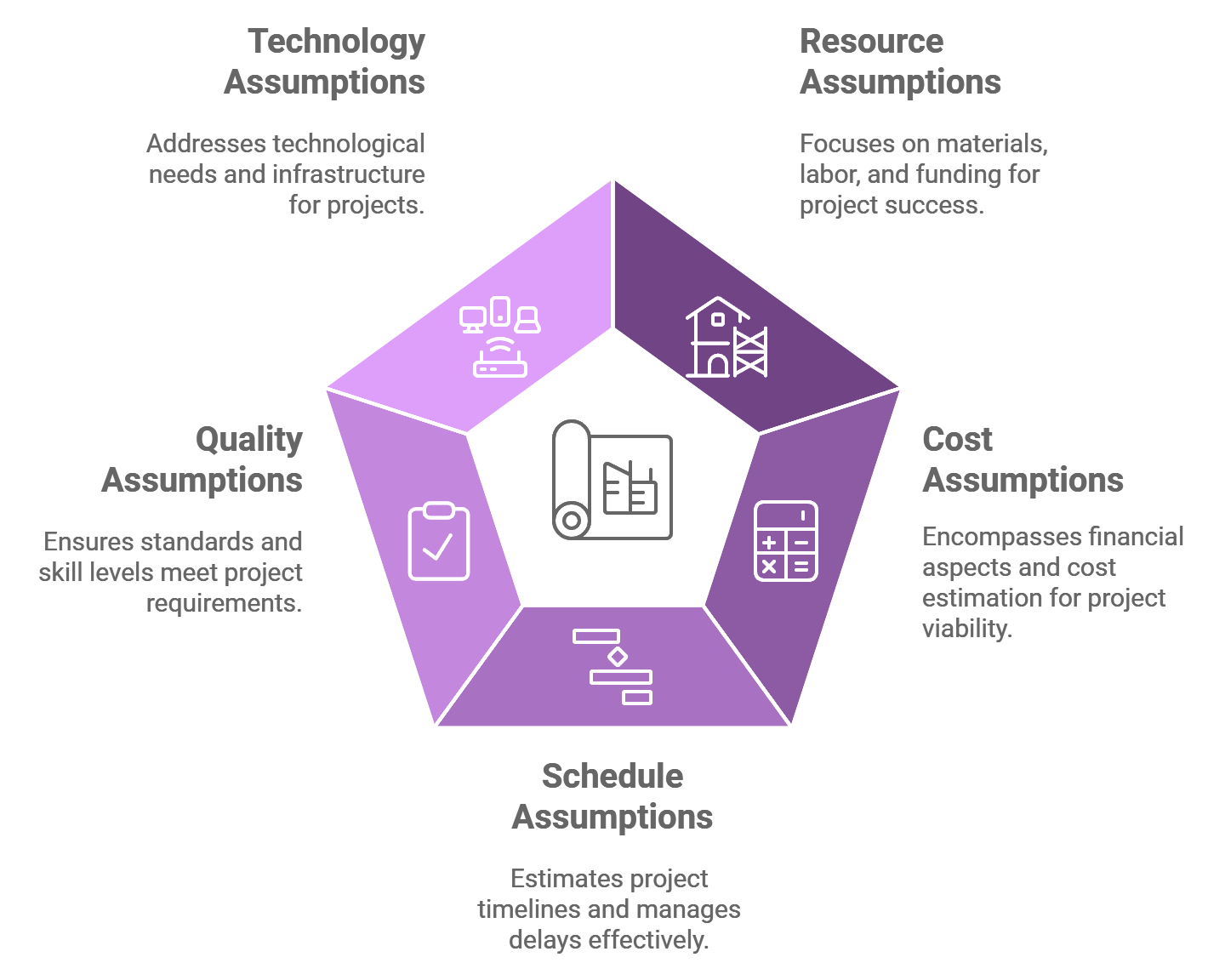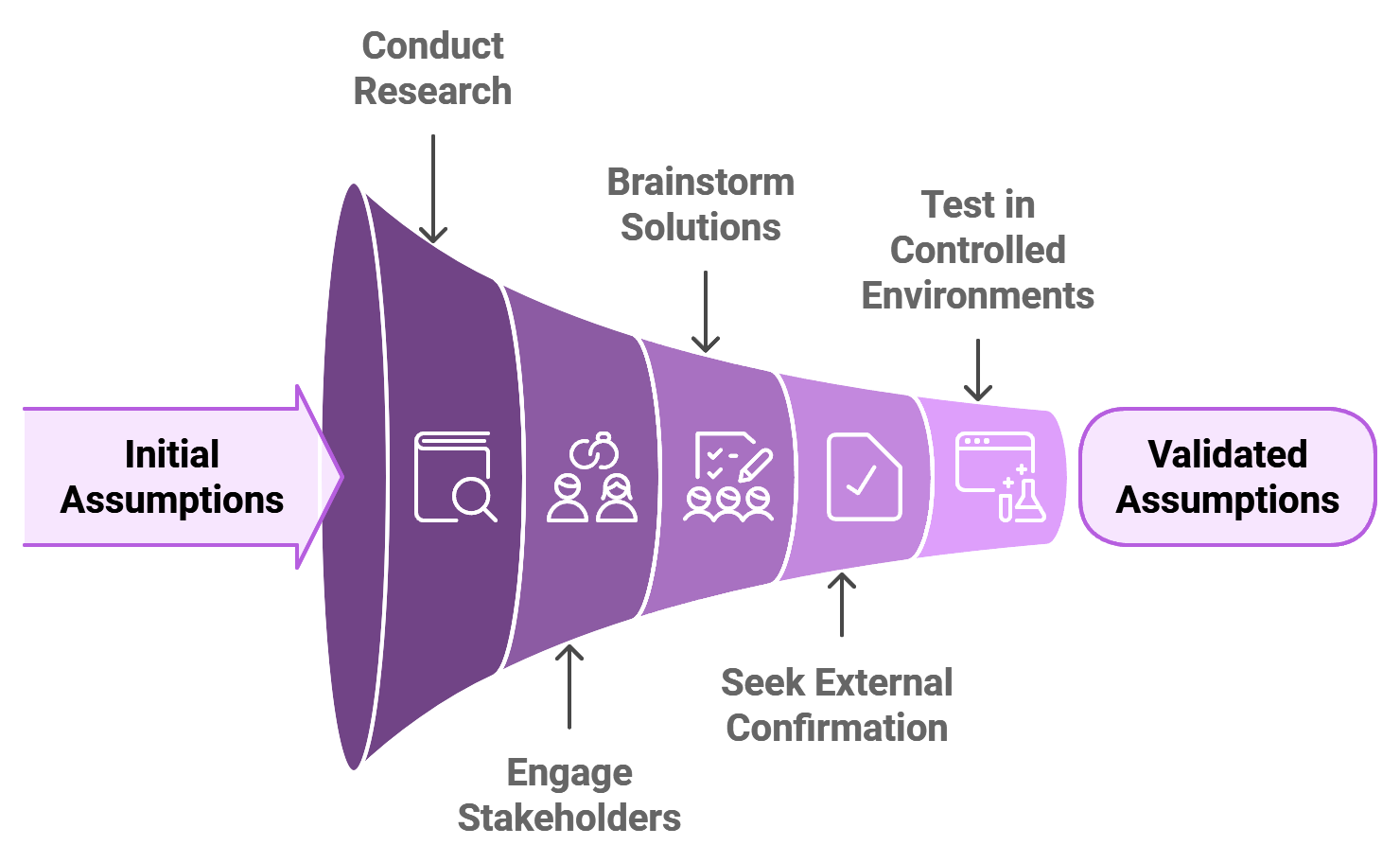The Importance of Project Assumptions
And how they help project managers to form project frameworks!

Imagine launching a project without any idea of how long it will take, what resources you’ll need, or how much it will cost — sounds impossible, right?
That’s where project assumptions come in. These are the expectations and predictions that project managers build into their plans, based on what they believe will happen during a project’s lifecycle. While it’s impossible to predict every variable, assumptions help lay the groundwork for project success. However, assumptions are not merely educated guesses; they need to be carefully considered, as they inherently carry risk.
In this article, we’ll explore why project assumptions are vital for effective planning and how you can manage them for better outcomes.
Here’s what you’ll learn:
✅ How to identify and validate critical project assumptions
✅ Common types of assumptions that impact project success
✅ Strategies to manage and adjust assumptions throughout a project’s lifecycle
What is a Project Assumption?
A project assumption is a critical element in project management that refers to any condition, event, or factor that is expected to occur during the project lifecycle, but without absolute certainty.
Project assumptions are essential for effective planning, as they help project managers anticipate variables like resource availability, timelines, and project dependencies. However, these assumptions come with potential risks, as they are not guaranteed outcomes. Accurate project assumptions are usually based on past experience, industry standards, or expert analysis, rather than speculation, to minimize uncertainties and ensure a more predictable project outcome.
In project management, assumptions are integral to developing the project scope, cost estimates, and timelines.
For example, a common assumption might be that key resources will be available at specific project stages, or that regulatory approvals will be secured on time. Without these assumptions, it would be nearly impossible to build a solid project plan.
Nonetheless, identifying and documenting assumptions, while conducting a risk assessment to account for possible deviations, is crucial to managing project risk effectively.
Common types of Project Assumptions
Understanding and managing project assumptions is essential for the successful execution of any project. Here are the most common types of project assumptions, along with real-world examples to help you better plan and mitigate risks:
Resource Assumptions
Resource assumptions cover essential elements like materials, labor availability, and funding. Accurately forecasting resource allocation is critical for project success.
For instance, during the Covid-19 pandemic, many projects faced delays due to incorrect resource assumptions, mistakenly assuming that necessary materials, labor, and funds would be readily available.
Effective resource management should include contingency plans to address supply chain disruptions and labor shortages. Tools like project resource management software can aid in better resource allocation and planning.
Cost Assumptions
Cost assumptions are closely tied to project resources but encompass the broader financial aspects, such as cost estimation for materials, services, and unforeseen expenses.
Misjudging costs can severely impact budget forecasting and project viability. Utilizing cost management tools and continuously reviewing market conditions helps refine cost assumptions and align them with project budgeting.
Regular budget reviews and cost estimation adjustments ensure that the project remains financially viable throughout its lifecycle.
Schedule Assumptions
Schedule assumptions focus on the project timeline, estimating how long different phases of the project will take.
When scheduling assumptions fail due to delays in resource availability or Scope Creep, the entire project timeline can be impacted. In such cases, accurate time management (like Time-Boxing, for example), coupled with contingency planning, is essential for keeping the project on track.
Quality Assumptions
Quality assumptions refer to the expected standards for materials and deliverables, as well as the skill levels of the team.
Misaligned quality assumptions can result in poor project outcomes, leading to rework, delays, and dissatisfied stakeholders.
Establishing clear quality control benchmarks and conducting regular quality reviews ensure that project deliverables meet the required standards. This also includes monitoring the skill levels of team members to ensure high-quality performance.
Technology Assumptions
Technology assumptions revolve around the availability and functionality of project technologies, such as hardware, software, and communication tools.
Projects today heavily depend on digital infrastructure, and failing to properly account for technology needs can cause significant delays.
For instance, some project managers have found that adopting a reliable VoIP phone system is more effective than traditional communication methods. Ensuring robust technology infrastructure and planning for potential tech upgrades can prevent disruptions to the project workflow.
Location Assumptions
Location assumptions involve geographic factors, such as site accessibility, traffic conditions, and logistical considerations.
Projects often assume that specific locations will be available and suitable for staging resources, without considering potential logistical challenges.
Ignoring location-based factors can lead to delays and increased costs. Thorough location assessments and logistics planning should be integral parts of the project planning process to ensure smooth execution.
Environmental Assumptions
Environmental assumptions account for factors like weather, climate, and environmental regulations, all of which can significantly impact a project’s progress.
For example, in industries like construction or agriculture, poor weather conditions can disrupt schedules or spoil materials if not properly handled. Anticipating these environmental factors and preparing mitigation strategies ensures that the project remains on schedule.
Using weather forecasting tools and environmental impact assessments can help refine these assumptions.

Why do we need Assumptions in Project Management?
In project management, assumptions play a crucial role in building a reliable framework for success. Whether you’re developing a marketing strategy or executing a new project management plan, assumptions allow you to move forward with decisions, despite not having all the details. Without them, planning would be paralyzed by the uncertainty of variables that can’t be confirmed until later in the project.
Assumptions address Uncertainty
No project begins with all the facts. It’s simply impossible to account for every variable, such as unexpected delays, resource availability, or market fluctuations.
Project assumptions fill in these gaps, allowing project managers to estimate and predict outcomes based on previous experience, available data, or industry standards.
Why Assumptions aren’t Guesswork
It’s important to clarify that assumptions aren’t just guesses. While they address unknowns, they should always be rooted in experience, research, or expert judgment.
When planning a software development project, for example, you might assume a certain level of user engagement based on past launches. These educated project assumptions help avoid operational delays and enable smoother execution.
- Informed Assumptions: The best project assumptions are data-driven. They often come from historical project data, expert insights, or market trends.
- Risk Mitigation: Identifying and documenting assumptions early helps pinpoint areas of uncertainty, allowing project managers to proactively develop risk management strategies.
Consider the scenario of planning a product launch for a new app. You might not know the exact server load on the launch date, but you can assume traffic based on previous product releases and user interest. Similarly, while you can’t predict the exact timelines for third-party vendors, you can use typical lead times to make educated assumptions about delivery dates.
The Importance of validating and revisiting Assumptions
It’s crucial to continuously validate project assumptions as the project progresses. Incorrect assumptions can derail a project if left unchecked.
Establish regular check-ins to confirm whether your assumptions are still valid. For instance, if market conditions change, you may need to adjust timelines, resources, or project scope.
Benefits of using Assumptions in Project Management
- Clearer Planning: Assumptions help structure timelines, budgets, and resource allocation, making the project planning process more efficient.
- Proactive Risk Management: By identifying assumptions early, you can better manage risks and prepare for contingencies.
- Enhanced Communication: Assumptions set expectations for stakeholders, ensuring everyone is on the same page regarding project unknowns.
Ensure your Assumptions are valid
Validating project assumptions is crucial for mitigating risks and ensuring project success. To assess the validity of assumptions, follow these best practices:
- Conduct thorough Research: Analyze data from past projects and similar work to gauge whether your current assumptions align with historical insights. This retrospective approach can help identify patterns that validate future assumptions.
- Engage with Team Members and Stakeholders: Open dialogue with stakeholders is essential. Ask questions and request proof, documentation, or experiences that support your assumptions. Collaborative input enhances credibility and reduces uncertainty.
- Brainstorm solutions: Utilize brainstorming sessions, both individually and with your team, to explore all angles of an assumption. This can reveal different perspectives that may strengthen or challenge its validity.
- Seek external confirmation: Don’t rely solely on internal sources. Contact relevant authorities, such as regulatory agencies or industry experts, for objective verification. External validation adds an extra layer of confidence to your assumptions.
- Test in Controlled Environments: When feasible, conduct small-scale tests to evaluate the feasibility of an assumption. Document the outcomes and use these insights for future projects to create a more reliable project framework.

Managing your Project Assumptions
To effectively manage project assumptions, consider these essential steps:
- Leverage past projects for insight: Past projects provide valuable data for forming new assumptions. When a previous project is similar to the current one, its outcomes can help refine and validate assumptions. However, ensure that past project data is assessed for current relevance, and any associated risks are accounted for.
- Active monitoring and adaptation: Assumption management is not a one-time task but an ongoing process. As the project progresses, new information may challenge the initial assumptions. When discrepancies or changes arise, update the assumptions promptly. Document these adjustments and inform all relevant stakeholders to maintain transparency and alignment.
- Communicate changes effectively: Clear communication is essential when assumptions change. For example, if a subcontractor fails to meet a deadline in a construction project, it can delay dependent tasks. Informing other contractors and project managers promptly allows them to adjust their schedules and maintain project momentum.
- Proactive validation and Risk Management: One of a project manager’s critical roles is to validate and rectify initial assumptions early in the project lifecycle. Continuously analyze project performance against these assumptions to mitigate potential risks and guide the project toward successful completion.

Discover the ultimate tool to manage your project assumptions.
Sign up for free today!
Final Thoughts
Project Assumptions are not just a background detail, they are essential building blocks for shaping feasible plans.
Their strategic identification, validation, and continuous management empower project managers to navigate uncertainties with confidence, moving projects forward with informed expectations instead of blind guesses.
The strength of a project lies in balancing these assumptions with proactive risk management and adaptability. Through diligent research, stakeholder collaboration, and ongoing monitoring, project teams can align their plans with reality, uphold stakeholder trust, and mitigate potential risks.
Mastering the art of managing project assumptions ultimately sets the foundation for resilient and successful project outcomes.
Until next time,
The Zenkit Team
FREE 20 MIN. CONSULTATION WITH A PROJECT MANAGEMENT EXPERT
Wanna see how to simplify your workflow with Zenkit in less than a day?
Book a Live Demo
I have learn a few good stuff here. Certainly price bookmarking for revisiting.
I wonder how so much effort you place to make one of these excellent informative website.
Hi Sybil,
Thank you for the kind words.
We’re glad to hear that you’ve enjoyed the article!